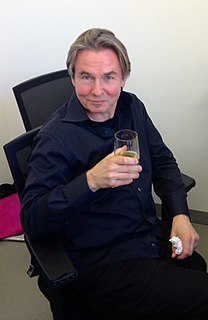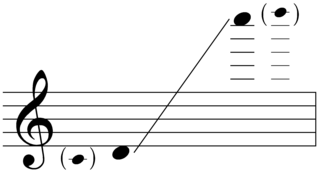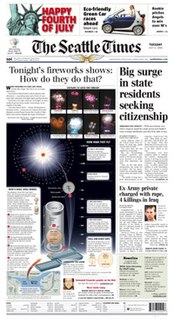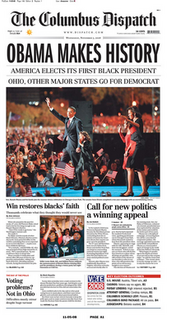Ellen Taaffe Zwilich is an American composer, the first female composer to win the Pulitzer Prize for Music. Her early works are marked by atonal exploration, but by the late 1980s she had shifted to a post-modernist, neo-romantic style. She has been called "one of America’s most frequently played and genuinely popular living composers." She was a 1994 inductee into the Florida Artists Hall of Fame. Zwilich currently serves as the Francis Eppes Distinguished Professor at Florida State University.

Esa-Pekka Salonen is a Finnish orchestral conductor and composer. He is principal conductor and artistic advisor of the Philharmonia Orchestra in London, conductor laureate of the Los Angeles Philharmonic, and music director-designate of the San Francisco Symphony.
The Cello Concerto in B minor, Op. 104, B. 191, is the last solo concerto by Antonín Dvořák. It was written in 1894–95 for his friend, the cellist Hanuš Wihan, but was premiered by the English cellist Leo Stern.
Richard Danielpour is an American composer.
Christopher Chapman Rouse is an American composer. Though he has written for various ensembles, Rouse is primarily known for his orchestral compositions, including a Requiem, eleven concertos, and five symphonies. His work has received numerous accolades, including the Kennedy Center Friedheim Award, the Grammy Award for Best Classical Contemporary Composition, and the Pulitzer Prize for Music. Rouse was the composer-in-residence for the New York Philharmonic from 2012 to 2015.

Alisa Weilerstein is an American classical cellist. She was named a 2011 MacArthur Fellow.
Margaret Brouwer b. Ann Arbor, Michigan, February 8, 1940 is an American composer and composition teacher. She founded the Blue Streak Ensemble chamber music group.

Joshua Roman is an American cellist.
Benjamin Yusupov is a classical composer, conductor and pianist.
Fabian Müller is a Swiss composer.
Toby Saks was an American cellist, the founder of the Seattle Chamber Music Society and a member of the New York Philharmonic.
The Concerto for Orchestra is a four-movement concerto for orchestra written in 1969 by the American composer Elliott Carter. The work was commissioned by the New York Philharmonic to commemorate their 125th anniversary and was premiered by the orchestra under the conductor Leonard Bernstein in New York City, February 5, 1970.
Alternative Energy is a symphony for electronica and orchestra in four movements by the American composer Mason Bates. The work was commissioned by the Chicago Symphony Orchestra, for whom Bates was then composer-in-residence. It was premiered by the orchestra under conductor Riccardo Muti at Symphony Center in Chicago, February 2, 2012.
The Cello Concerto is a concerto for solo cello and orchestra by the American composer Nico Muhly. The work was commissioned by the Barbican Centre for the Britten Sinfonia and cellist Oliver Coates, to whom Muhly dedicated the piece. It was first performed on March 16, 2012 at the Barbican Centre by Coates and the Britten Sinfonia under conductor André de Ridder.
The Cello Concerto No. 3, Legend of the Phoenix, is a composition for cello solo and orchestra by the American composer Augusta Read Thomas. The work was commissioned by the Boston Symphony Orchestra with contributions from Bill and Solange Brown. It was first performed in Boston on March 14, 2013, by the cellist Lynn Harrell and the Boston Symphony Orchestra under the conductor Christoph Eschenbach. Thomas subsequently adapted the piece into a viola concerto in 2013.
The Cello Concerto No. 2 is the second cello concerto by the Finnish composer Magnus Lindberg. It was commissioned by the Los Angeles Philharmonic in June 2013 to fill the planned premiere date of Oliver Knussen's then delayed Cello Concerto. The work was first performed in the Walt Disney Concert Hall, Los Angeles, on October 18, 2013 by the Finnish cellist Anssi Karttunen and the Los Angeles Philharmonic under the direction of Esa-Pekka Salonen.
The Concerto for Cello and Orchestra is a cello concerto by the Polish composer Witold Lutosławski. The work was commissioned by the Royal Philharmonic Society with support from the Calouste Gulbenkian Foundation. It received its world premiere at the Royal Festival Hall on October 14, 1970 by the cellist Mstislav Rostropovich and the Bournemouth Symphony Orchestra under the direction of Edward Downes.
Geoffrey Gordon is an American composer of classical music.
The Cello Concerto is a composition for cello and orchestra by the Finnish composer Esa-Pekka Salonen. The work was co-commissioned by the Chicago Symphony Orchestra, the New York Philharmonic, the Barbican Centre, and the Elbphilharmonie. It was completed in 2017 and was first performed by the cellist Yo-Yo Ma and the Chicago Symphony Orchestra under the direction of Salonen on March 9, 2017. The piece is dedicated to Yo-Yo Ma.









